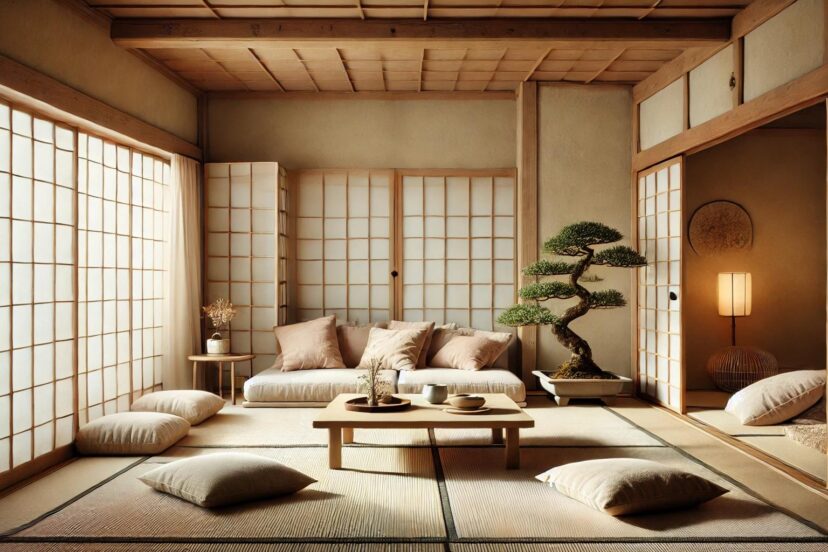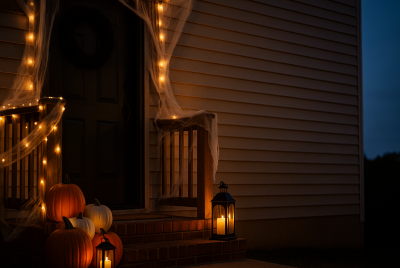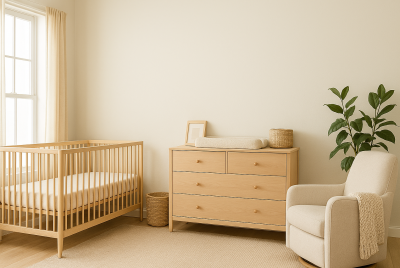Japanese Home Décor: Tranquility and Elegance
We may earn a commission for purchases made using our links. Please see our disclosure for more details.
Hey there, home design enthusiasts! Ever feel like your living space is more chaos-central than a zen paradise? Well, buckle up, because we’re about to dive into the world of Japanese home decor. Trust me, by the time we’re done, you’ll be itching to transform your digs into a tranquil retreat that’ll make your stressed-out friends green with envy.
Why Choose Japanese Home Decor?
Alright, let’s get real for a sec. Are you sick and tired of coming home to a space that feels like it’s yelling at you? (I know I am!) That’s where Japanese home décor swoops in like a decluttering superhero. This style is all about creating a vibe that’s open, airy, and chill AF. It’s not just about slapping some bamboo on your walls and calling it a day – it’s a whole lifestyle, folks.
(Fun fact: I once tried to “zen up” my apartment by buying a bunch of plants. Two weeks later, I had a mini jungle and a severe case of buyer’s remorse. Learn from my mistakes, people!)
The Philosophy Behind Japanese Home Decor
Okay, time for a quick philosophy lesson – don’t worry, I promise it won’t put you to sleep. At the heart of Japanese design is this cool concept called “Wabi-Sabi.” No, it’s not a spicy condiment – it’s all about embracing imperfection and nature’s beauty. Think of it as the “bed head” of interior design – perfectly imperfect and totally chill.
Minimalism with a Purpose
Now, when I say “minimalism,” don’t panic. We’re not talking about living in an empty white box with nothing but a meditation cushion. Japanese minimalism is like your home went on a juice cleanse – it’s all about keeping the good stuff and ditching the junk that’s weighing you down.
Picture your home as a Zen garden. (Minus the back-breaking raking, thank goodness!) Every rock, every plant has its place. There’s no clutter, no chaos – just pure, blissful calm. Sounds pretty sweet, right?
Natural Materials for a Natural Feel
Here’s where things get earthy – and I don’t mean in a “hippie commune” kind of way. Japanese décor is all about bringing the outside in. We’re talking wood, bamboo, stone, and paper. These materials aren’t just pretty to look at; they’re like a warm hug for your soul.
(True story: I once went overboard with the “natural” theme and ended up with a living room that looked like a logger’s cabin. Moderation is key, folks!)
Sliding Doors: Shoji Screens
Alright, pop quiz: What’s iconic in Japanese design, saves space, and looks cool as heck? If you said “Shoji screens,” give yourself a pat on the back! These sliding doors are like the Swiss Army knife of home decor. They save space, let in soft light, and can hide your messy home office in a pinch. Win-win-win!
Furniture: Low and Functional
Get ready to channel your inner yogi, because Japanese furniture is all about getting low. We’re talking futons, floor cushions, and tables that make you wonder if you’ve shrunk overnight. But here’s the kicker – sitting close to the ground is actually super grounding. (See what I did there?)
Imagine sinking into a low-rise platform bed after a long day. It’s like your bedroom is giving you a big ol’ bear hug. Who wouldn’t want that?
The Art of Decluttering: Less is More
Okay, brace yourselves – we’re about to talk decluttering. Japanese homes are like ninjas when it comes to organization. Everything has its place, and if it doesn’t spark joy (thanks, Marie Kondo!), it’s sayonara, baby.
(Full disclosure: I once tried to declutter my bookshelf. Two hours later, I was surrounded by books, crying over my 3rd-grade diary. Maybe I need more practice.)
Tatami Mats: A Staple of Japanese Floors
Let’s talk floors for a hot second. Tatami mats are where it’s at. These woven straw mats are like nature’s carpet – they feel great underfoot, smell amazing, and instantly make your space feel more authentic than a sushi chef’s kitchen.
Bringing Nature Inside with Plants
Now, don’t panic – I’m not suggesting you turn your living room into a botanical garden. (Although, if that’s your jam, go for it!) In Japanese décor, it’s all about choosing the right green buddies. Bonsai trees and bamboo are popular choices that’ll make your space feel more zen than a meditation retreat.
Just remember to water them, unlike my sad collection of succulent corpses. (RIP, little dudes.)
Lighting: Soft and Natural
Forget those harsh overhead lights that make you feel like you’re being interrogated. Japanese lighting is all about that soft, dreamy glow. Think paper lanterns (Andon) and candles. It’s like your home is constantly saying, “Chill out, dude. Everything’s gonna be alright.”
Japanese Artwork: Subtle and Elegant
When it comes to art in Japanese décor, less is definitely more. We’re talking ink paintings, calligraphy, and woodblock prints that are more subtle than a ninja in socks. One beautiful piece can speak volumes – no need for a gallery wall that looks like it threw up all over your living room.
Colors of Japanese Home Decor: Earthy and Neutral
If you’re a fan of neon pink and electric blue, I’ve got some bad news for you. Japanese décor is all about those soothing, earthy tones. Think soft beiges, creams, and browns with the occasional pop of deep green or blue. It’s like your walls are whispering, “Relax, buddy. We got this.”
Japanese Textiles: Simple but Stunning
Japanese textiles are like that effortlessly cool friend who always looks amazing without trying. We’re talking high-quality, simple designs that add texture without screaming for attention. Whether it’s a soft cotton futon cover or a silk kimono used as wall art, these fabrics are the unsung heroes of Japanese décor.
Creating a Zen Garden at Home
Fancy yourself a bit of a gardener? Why not take things up a notch with a Zen garden? These bad boys use rocks, sand, and minimal greenery to create a space that’s more peaceful than a library on a Sunday morning. You can even make a mini version indoors if your outdoor space is more “concrete jungle” than “lush oasis.”
The Importance of Space in Japanese Home Decor
Ever walked into a room and just felt… right? That’s the power of good space planning, my friends. In Japanese design, there’s this concept called “Ma” – it’s all about embracing negative space. Think of it as giving your room room to breathe. No more cramming furniture in like it’s a game of Tetris!
Related Products for Japanese Home Decor
Alright, so you’re sold on the whole Japanese décor thing. (I knew you would be!) Here are some goodies to get you started on your journey to zen:
- Tatami Mats: Because who doesn’t want to feel like they’re walking on a cloud?
- Shoji Screens: Perfect for hiding your guilty pleasure rom-com collection.
- Bonsai Trees: For when you want to feel like a giant.
- Floor Cushions (Zabuton): Your butt will thank you.
- Japanese Futons: For those who like their bed with a side of flexibility.
- Bamboo Blinds: Privacy with style? Yes, please!
- Japanese Tea Sets: Because everything’s better with tea.
- Paper Lanterns (Andon): Instant mood lighting, no dimmer switch required.
Scientific Research and Reviews on Japanese Home Decor
Now, I know what you’re thinking – “This all sounds great, but where’s the science?” Well, hold onto your kimonos, because I’ve got some brainy stuff for you:
- Interior Design in Japan – Britannica
This bad boy dives deep into the simplicity, functionality, and nature connection in traditional Japanese design. It’s like a crash course in concepts like Ma and Wabi-Sabi, minus the pop quiz at the end. - Japanese Interior Design Influenced by Japanese Philosophies: Ma, Wabi-Sabi, and Shakkei – Conn College
This article is like the cool professor of Japanese design. It breaks down how philosophies like Ma, Wabi-Sabi, and Shakkei (borrowed scenery) influence interior design. Spoiler alert: It’s all about promoting simplicity and mindfulness while making you feel good.
Summary: Achieving Serenity through Japanese Home Decor
So there you have it, folks – Japanese home décor in a nutshell. It’s not just about making your space look good (although that’s a sweet bonus). It’s about creating a home that feels like a warm hug after a long day. By embracing minimalism, natural materials, and a deep connection to nature, you’re not just redecorating – you’re creating a lifestyle.
Whether you’re going full Japanese or just adding a few zen touches, this timeless style is sure to bring some calm to your chaos. And let’s face it, in today’s world, couldn’t we all use a little more calm?
FAQs about Japanese Home Decor
What are the key elements of Japanese home décor?
Think natural materials (wood, bamboo, stone), minimalist design, neutral colors, soft lighting, and some green buddies like bonsai trees. It’s like bringing a slice of nature indoors, minus the allergies.
How can I add a Japanese touch to my home without major renovations?
Start small, grasshopper. Declutter like your life depends on it, bring in some natural elements, and swap out your harsh lighting for something softer. A Shoji screen here, a tatami mat there, and boom – instant zen.
What is Wabi-Sabi in Japanese décor?
It’s the “perfectly imperfect” philosophy. Think of it as the “I woke up like this” of interior design. It’s all about embracing natural, simple elements and appreciating the beauty in wear and tear.
Can Japanese home décor work in small spaces?
Absolutely! In fact, Japanese design is like the superhero of small spaces. Its focus on minimalism and functionality means you can make even the tiniest apartment feel spacious and airy. Marie Kondo would be proud.
Is Japanese home décor expensive?
It doesn’t have to be! While some traditional elements might cost a pretty penny, the overall minimalist philosophy actually encourages you to buy less. Focus on quality over quantity, and your wallet (and your space) will thank you.
And there you have it – your crash course in Japanese home décor. Now go forth and create the zen paradise of your dreams. Just remember, if you end up with more bonsai trees than furniture, you might have gone a bit overboard. But hey, at least your home will smell great!




